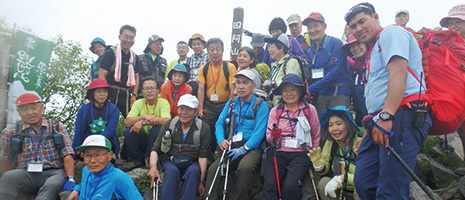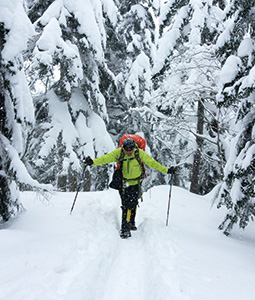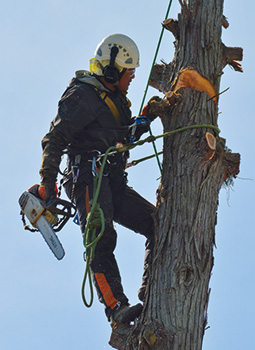Home > Highlighting JAPAN > Highlighting Japan August 2019 > My Way
Highlighting JAPAN


The Mountain Day Ambassador from Nepal
Nepali Gyalu Lama is a former Sherpa on Mount Everest who moved to Nagano Prefecture with its beautiful mountain ranges and now communicates the appeal that mountains hold for alpine guides to people in Japan and overseas.
Gyalu Lama from Nepal lives in Nagano Prefecture and is an experienced alpine guide. Lama was born and raised in the Solukhumbu District in the Himalayan foothills, in a village situated at an altitude of about 3,200 meters. In 1989, at the age of 14, Lama began accompanying teams of mountain climbers as a member of the kitchen staff. In 1992, after gaining experience in the Himalayan Mountains, Lama became a Sirdar (lead guide), and from 1993 acted as a climbing Sherpa, supporting many climbers to reach the 8,000-meter-high summit. In 2000, he led a Japanese climbing team to the summit of Mount Everest.
The opportunity to come to Japan came about through marriage to a Japanese woman who he met when she was traveling in the Himalayas. In 2004, the couple was blessed with a daughter, prompting them to move to Kanagawa Prefecture to be closer to his wife’s parental home. Later, the family took up residence in Matsumoto City, Nagano Prefecture, which is the sister city of Nepal’s capital, Kathmandu. Nagano Prefecture is home to Japan’s most famous mountain range, the Japan Alps. Lama works as a mountain-climbing guide in the Northern Alps, a part of the Japan Alps that is especially popular with climbers from Japan and overseas. He also helps to maintain the mountains, on commission from Matsumoto City and other authorities, and lectures on the appeal of Japan’s mountains in his capacity as a “Mountain Day Ambassador,” named after the Mountain Day national holiday on August 11th, which aims to foster an appreciation for the blessings of the mountains.
The most rewarding aspect of Lama’s work, he says, is providing mountain-climbing guidance for children. Under Lama’s watchful eye as he offers advice such as extending and relaxing the limbs and balancing the body instead of using physical strength, the children rely on maps to navigate their way up the mountain, carrying luggage such as tents and food on their backs. The children experience the rigors of mountain climbing, but when they reach the top, everyone cheers.
“As they climb, I encourage them by telling them that this experience is sure to stand them in good stead when they grow up. Some experiences are tough, while others are amazing. Mountain climbing is like life,” says Lama with a smile.
The Himalayas have the highest peaks in the world, with only blue skies and white snow beyond the coniferous forest zone. Japanese mountains, on the other hand, have four seasons, each with its own distinct scenery. Lama says that he was impressed when he first saw mountains in Japan covered with autumn leaves.
“My favorite mountain is Mount Jonen, because you get an uninterrupted 360-degree view of the Northern Alps from its summit. The rice fields in Azumino City that spread out before your eyes near the summit change color completely from season to season. I never tire of the mountain, no matter how many times I climb it,” he says.
Lama is also fascinated by the mountain huts that play an important role in inspecting mountain trails, helping people in distress, and other aspects of mountain safety. “I enjoy Japan’s mountain huts because they each have their own unique character depending on the hut’s owner. Some places serve delicious food, and some places let you experience ice climbing safely by building a huge ice wall next to the hut. There’s also a hut whose owner has a weather forecaster’s license and gives you detailed information about the weather,” says Lama.
Many guides from Nepal have come for training to learn about the operation and management of these Japanese mountain huts, sewage treatment technology and other aspects. Lama says that one thing he enjoys is hiking with them from time to time.
Currently, Lama is aiming to obtain certification as a mountain guide by the Japan Mountain Guides Association. Japan’s mountain trails are well-developed, and recent years have seen an increase in the number of mountain climbers. However, according to Lama, Japanese mountains are often more dangerous than the Himalayas since, while they may not be high, they are steep, the terrain is complex and weather conditions are changeable. Lama would like to gain qualifications in Japan that will enable him to focus even more on activities that ensure the safety of mountain climbers and protect the natural environment of the mountains.
© 2009 Cabinet Office, Government of Japan









